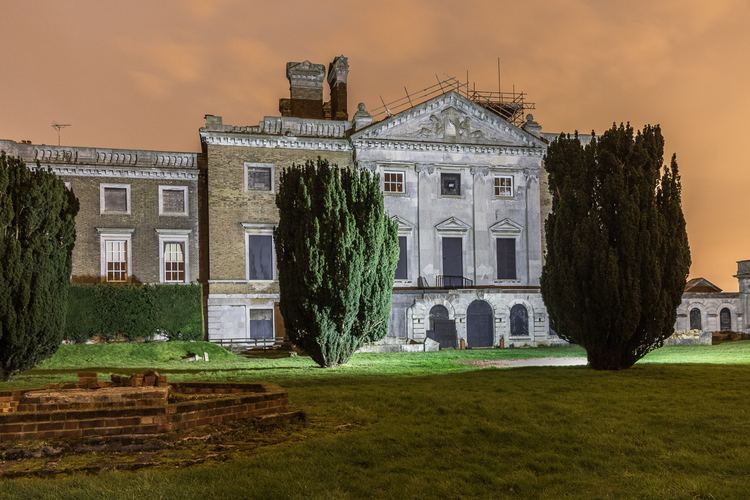Phone +44 7799 473108 | ||
 | ||
Address Stables Courtyard, Copped Hall, Crown Hill, Epping CM16 5HS, UK Similar Epping Forest, Fenton House, Hall Place, Myddelton House Gardens, Titsey Place | ||
Copped hall copped hall trust 2015
Copped Hall or Copthall is a mid-18th century English country house close to Epping, Essex, which is currently (2016) undergoing restoration. Copped Hall is visible from the M25 motorway between junctions 26 and 27.
Contents
- Copped hall copped hall trust 2015
- Bastille overjoyed live at copped hall
- Foundation
- Heyday
- Decline
- Restoration
- References
Bastille overjoyed live at copped hall
Foundation
King Richard I bestowed the lands on Richard Fitz Aucher to hold them in fee, and hereditarily of the Abbey. During the reign of Edward I Copthall continued in the possession of the Fitz Aucher family till it came into the hands of the Abbot until the dissolution of the monasteries.
Heyday
Sir Thomas Heneage received the estate of Copthall on 13 August 1564 from Queen Elizabeth I, where he subsequently built an elaborate mansion from the designs of John Thorpe. The Queen was a frequent visitor to Essex and she is recorded as having visited Heneage at Copthall in 1575. His daughter, afterwards Countess of Winchelsea, sold it to the Earl of Middlesex in the reign of James I. From him it passed to Charles Sackville, Earl of Dorset, who sold it in 1701 to Sir Thomas Webster, Bt.
Edward Conyers purchased the estate in 1739, but he only owned the house for three years before dying in 1742. Conyers' son John (1717-1775) inherited the property and considered repairing the original Hall as it had become dilapidated. However, in the end he decided to build a new house on a different site. This was built between 1751-58 after demolishing the old one around 1748.
The Georgian house is a large structure set in landscaped parkland, described at one time as "the Premier house of Essex". The gardens of the main house have a ha-ha (a disguised ditch), which allows animals to approach yet prevents them from entering. It was a good example of the '18th-century house in landscape'. The mansion was placed overlooking two valleys with a third valley to the north. The building was well proportioned, with the chimneys built in a tight geometric arrangement.
The next member of the family to inherit Copped Hall was his son John Conyers II, who extensively altered the house.
Decline
His son, Henry John Conyers (1782–1853), was said to be so obsessed with hunting that he neglected the house. He was survived by three daughters. The house was finally sold by the family in 1869. It was bought by George Wythes (1811-1883), who had made his fortune in civil engineering, building railways around the world.
Country Life magazine ran two articles on Copped Hall in 1910, illustrated with many photographs.
The main house was gutted in an accidental fire one Sunday morning in 1917 which was caused by an electrical fault.
The Wythes family, who were the then occupiers, moved into Wood House on the estate. Ernest Wythes died in 1949 and his wife died in 1951. Around 1950 the estate was sold, after which followed a period of total neglect, see Destruction of country houses in 20th-century Britain. The main 18th-century house was first stripped of its more desirable building materials then left to deteriorate. The orangery was blown up as an army training exercise in the 1960s. All of the statues in the gardens were sold and removed to other large estate houses; some ended up in Anglesey Abbey in Cambridgeshire. A gazebo from the garden was set up in the grounds of St Paul's Waldenbury.
Restoration
In 1995 the Copped Hall Trust acquired the freehold of the house, ancillary buildings and gardens, all of which they are slowly restoring The surrounding parkland is now owned by the Conservators of Epping Forest, the City of London.
On 27 April 2004 Charles, Prince of Wales, accompanied by the Lord Lieutenant of Essex, Lord Petre, visited Copped Hall and inspected the restoration work. The Prince opened an exhibition of 18th century botanical water-colours in the new temporary gallery. These water-colours were painted by Matilda Conyers, the daughter of John Conyers, who built Copped Hall.
British singer Rod Stewart lives in a house on the Copped Hall estate.
